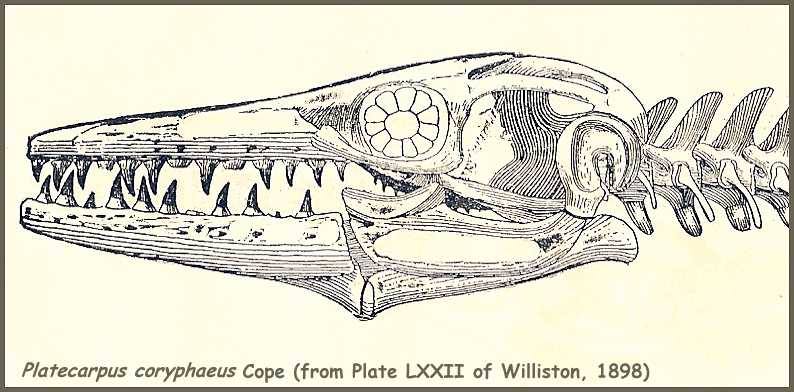
 |
Linking the Past with the Present:The Mosasaurs of Samuel W. WillistonLine drawings from Volume IV (Paleontology, Upper Cretaceous) of The University Geological Survey of Kansas, 1898Copyright © 2000-2009 by Mike EverhartUpdated 02/13/2009 |
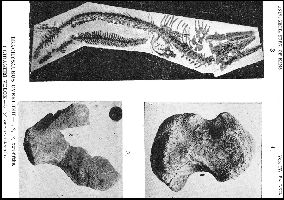 |
LEFT and RIGHT: Plate 62 and Plate 68 from Williston (1898). Note that Williston was among the very first to publish photographs of mosasaur specimens in the collection of the University of Kansas. | 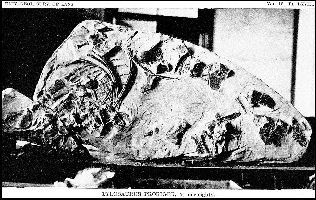 |
As indicated in the title, the purpose of this page is to "re-publish" these beautiful drawings which were painstaking hand drawn, one at a time and published using methods that were in many cases much different than those used in scientific publications today. Copies of the Geological Survey are becoming quite rare and generally cannot be checked out from libraries that do have them. Although the drawings are over a hundred years old, they are just as accurate and useful now as when they were first published. Dr. Williston and Mr. Prentice were major contributors to not only to the science but to the "art" of paleontology.
The drawings are faithfully reproduced here from black and white scans of the published figures and retain the same dramatic, visual impact as the originals. Some of the drawings have been "electronically" re-arranged to better fit the limits of the webpage, and some have been modified as mirror images so that the viewer can see both of the pair of bones that were part of the mosasaur skull.
Williston discussed and illustrated many mosasaurs in this publication. He identified the mosasaur shown on this page as Platecarpus coryphaeus. Two other species of Platecarpus, P. ictericus and P. tympaniticus, are virtually identical and indistinguishable from this species. According to several researchers, including Russell (1967) and Bell (1997), Platecarpus tympaniticus is the senior synonym of the three names. Williston indicated that the "type specimen" of P. tympaniticus is actually from Mississippi.
The following text is repeated from Williston, S. W., 1898. Mosasaurs. The University Geological Survey of Kansas, 4:28-32 and gives Williston's view of the history of fossil collecting in the Smoky Hill Chalk:
ADDENDA TO PART I By S. W. WILLISTON The first vertebrate fossil obtained from the Upper Cretaceous of Kansas was the type specimen of Elasmosaurus platyurus Cope, collected by Dr. Theophilus H. Turner, the physician of the garrison at Fort Wallace, and taken east by Dr. J. L. LeConte. It was described by Cope in LeConte's Notes on Geology of the Route of the Union Pacific Railroad, 1868, p. 68. The next specimen obtained was part of a cranium of Tylosaurus proriger Cope, the type, collected by Colonel Cunningham and Mr. Minor in the vicinity of Monument station, and sent by them to Prof. Louis Agassiz. The locality is probably Monument station of the overland route, in the vicinity of Monument Rocks, in the valley of the Smoky Hill river. Other specimens were later obtained by Drs. J. H. Janeway and George Sternberg in the vicinity of Forts Hays and Wallace, and by Mr. Webb, of Topeka. The first to make any systematic collections of fossils from the Cretaceous of Kansas was the late Prof. B. F. Mudge, at that time professor of geology in the Kansas Agricultural College. I was a student at that time under him at this college, and well remember the ardent enthusiasm that he evinced in the discoveries he made. His first expedition, as I remember, was up the Republican and Solomon rivers into the wholly uninhabited region, the home then of the bison and roving bands of marauding Indians. It was made shortly after the close of the college year in 1870. A chance acquaintance whom he met on the expedition, and who had recently come from Philadelphia, urged him to send his specimens to a young and promising naturalist in that city who was especially interested in vertebrate fossils. Although Professor Cope was then less than thirty years of age he had already achieved renown among naturalists, and it was to him that Professor Mudge wrote asking if he would be kind enough to examine the fossils and tell him what they were. Mrs. Mudge has kindly placed in my hands a part of the correspondence that followed, and I give herewith a letter from Professor Cope, after he had received the first consignment of fossils. It will be observed that Professor Cope speaks of a specimen found near the vicinity of Sheridan, now McAllaster. This specimen, with others, was, I believe, taken later in the season, while on a brief trip for the purpose of examining the geology in the vicinity of Wallace. He had no team or outfit, but collected the specimens from the immediate vicinity of the station. --------- PHILADELPHIA, October 28, 1870. Prof. B. F. Mudge: ESTEEMED FRIEND-The fossils arrived in safety, thanks to the careful packing, and I have examined and determined most of them. The collection is a valuable one, and is an earnest of what can be done for the geological survey of Kansas under more favorable opportunities for collection. I found portions of six species of reptilia, all of the order Pythonomorpha, and five species of fishes, of the new family of Saurodontidæ. Of the reptiles, there were two distorted vertebrae of a large Elasmosaurus, the species not determinable; one vertebra of it large Liodon, probably L. proriger Cope. The limb bones and accompanying vertebrae belong to a Polycotylus (Cope), but whether to P. latipennis is not yet determined. The three other reptiles are quite determinable, and now to science. I have ca11ed them Liodon mudgei, after the state geologist of Kansas, Liodon ictericus ( two individuals sent ), and Clidastes cineriarum - the last from the grity clay limestone [Pierre Shale] near Sheridan. The fishes are quite interesting, and have enabled me to define a new family, and correct the work of Agassiz and Leidy. They belong to the genus Saurocephalus of Harlan, which has been heretofore regarded as a Sphyrænoid fish. I find that it has not the least relationship to that order, but forms a new and interesting group near the Ganoids and Characius. In order to determine it more fully, I am exceedingly desirous of getting more complete remains, especially of the cranium and fins. The fo11owing is a list of the species:
This last is the large fish eight feet long without head from 100 miles up the Solomon. Its remains were highly interesting and enabled me to determine many new points in the structure of the group. I found by means of it that the group has a vertebrated tail; also that its anal or caudal fin-ray is that which has always been referred to the Ptychodon [Ptychodus] genus of sharks by Professor Agassiz. The pectoral rays have just been described by Leidy as a new genus of catfish, Xiphactinus audax! Then there is a new genus of the same family, Ichthyodectes ctenodon Cope, which is based on jaws and thirteen vertebrae from the yellow chalk. I hope that this species also may at some future time be more fully developed. I hope these researches, so successfully commenced, may cover the whole vertebrate fauna of the strata, I have studied especially the mammals and birds, as well as the reptiles and fishes. If you desire any part or all of my manuscript for the annual report to the legislature, I will send it on; in the meantime it will appear in Silliman's Journal and some abstracts here. I remain, with much regard, etc., EDWD. D. COPE. ------------- Late in the season of 1870, Professor Marsh, with an escort of United States soldiers, spent a short time on the upper part of the Smoky Hill river collecting vertebrate fossils. The material then collected served for the description of a number of interesting types by Marsh. It included the first known specimen of " Odontornithes," a foot bone brought in with other material, but which was not discovered in the material until after other specimens had been obtained later. In June of the following year Marsh again visited the same region, with a larger party and a stronger escort of United States troops, and was rewarded by the discovery of the skeleton which forms the type of Hesperornis regalis Marsh, together with other material. In 1871 Prof. E. D. Cope visited the regions and made many valuable discoveries, besides giving important notes concerning the geology of the formation. "The geology of the regions marked by this formation (the Niobrara epoch) is quite simple. The following description of the section along the line of the Kansas Pacific railroad will probably apply to similar sections north and south of it. The formations referable to the Cretaceous period on this line are the Dakota, Benton and Niobrara groups, or Nos. 1, 2, and 3, etc." In 1872 Professor Mudge made another expedition into the Cretaceous for fossils. The party accompanying him consisted of Professor Merrill, of Washburn College, Professor Felker, of Michigan Agricultural College, Professor Warder, of the Indiana Geological Survey, and seven students of the Agricultural College. They explored northwestern Kansas, traveling over 900 miles. It was on this exposition that Professor Mudge found the remarkable specimen of Ichthyornis, from the North Fork of the Solomon, which furnished to the world the discovery of the then startling fact of birds with genuine teeth. Under the date of September 2 of that year, Professor Marsh wrote to him inquiring about his summer collections in the Cretaceous, with the offer to "determine any reptilian or bird remains without expense," and stating that he would give him "full credit" for their discovery. Under date of September 25 he again wrote to him, acknowledging the receipt of a box of fossils, and stating that the "hollow bones are part of a bird, and the two jaws belong to a small saurian. The latter is peculiar, and I wish I had some of the vertebræ for comparison with other Kansas species." The latter is the Colonosaurus mudgei Marsh, which was afterwards found to belong with the bird specimen. In the autumn of 1872, Marsh, with a small party, made another expedition into the same region. These were the only times that Marsh personally visited these regions, all of his collections being afterward obtained by parties employed by him. In 1873 Mudge again spent some time in the exploration of the Cretaceous beds in the more northern part of the state -- the only region that was at all safe from marauding Indians. In 1874 Professor Mudge began systematic collections for Yale College, assisted by Mr. Henry Turner, of Clay Center. In July of that year his party was joined by Mr. (now Doctor) Harry A. Brous, of Manhattan, and myself, and explorations were continued into November along the Saline and Smoky Hill rivers. In 1875 explorations for Yale College were continued by Professor Mudge, assisted by Mr. Brous and myself, from March to October. In 1876 the party under charge of Professor Mudge consisted of Mr. Brous, Mr. E. W. Guild, who had been collecting the previous year independently, for Yale, Mr. G. P. Cooper, of Topeka, and myself. Work was continued until late in November. In 1877 the party (under charge of myself) collecting for Yale College consisted of Mr. Guild, Mr. Cooper, and my brother, Mr. F. H. Williston. Meanwhile Mr. Charles Sternberg had collected by himself in these regions, during 1875, for Professor Cope. In 1877 Mr. Sternberg was in charge of a party for Professor Cope, composed of Mr. (now Dr.) Russel Hill, of Philadelphia, Mr. Wilbur Brous and Mr. Knipe, of Manhattan. For several years following Mr. Guild collected for Yale College and Mr. Sternberg made some collections for Harvard University. In 1878 Professors Mudge, Snow and Dyche (then a student) spent some time in Gove county collecting for the University. It was on this expedition that Professor Snow obtained the specimen of Tylosaurus showing the skin. For a number of years prior to 1895 Mr. H. T. Martin collected for Yale College. In 1890 Prof. George Baur collected several weeks for Professor Zittel, of Munich. In 1889 and 1890 Judge E. P. West obtained many valuable specimens for the University of Kansas. In 1891 a party under my charge, composed of Mr. (now Professor) E. C. Case, Mr. (now Professor) E. Slosson and Mr. Charles Sternberg spent about two months on the Smoky Hill river searching for specimens for the University of Kansas. Mr. Charles Sternberg, in the latter part of that year and in the following, made considerable collections for Professor Zittel. In 1895 Messrs. H. T. Martin and T. R. Overton spent the season in making collections for the University of Kansas. During the past two years collections have been made by Mr. Martin and Doctor Mathews for the American Museum, of New York city. Some additional specimens of value have been obtained by purchase for the University of Kansas from Mr. Sternberg, Mr. Martin, and others. This in brief represents the explorational work in the Niobrara Cretaceous deposits to the present time. The few months of collecting done by Marsh and Cope, was under ample protection of soldiers. While yet the danger was fully as great or greater, the various other parties spent over thirty months in the same regions with no protection other than what their own rifles and revolvers afforded. Immigrants were massacred almost within rifle shot of the parties at different times, but fortunately no encounter was had by the explorers, though at times the danger was escaped almost marvelously." |
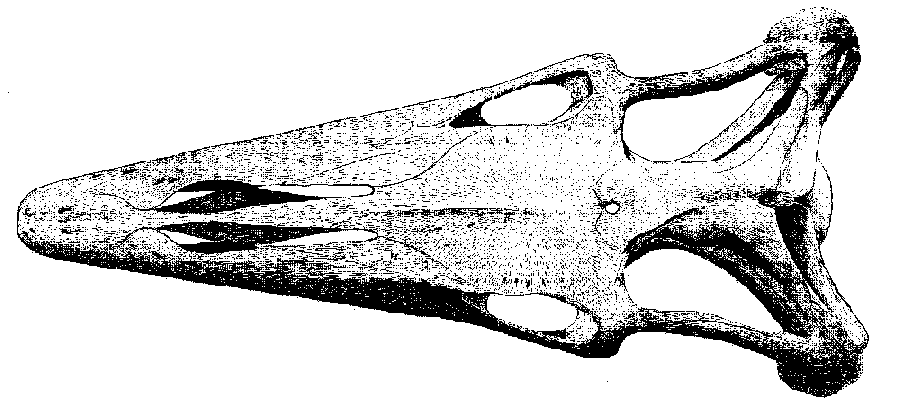
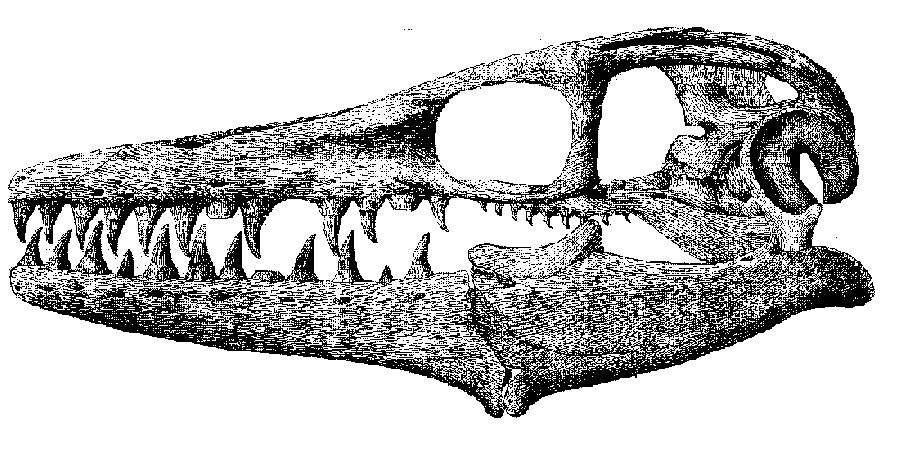

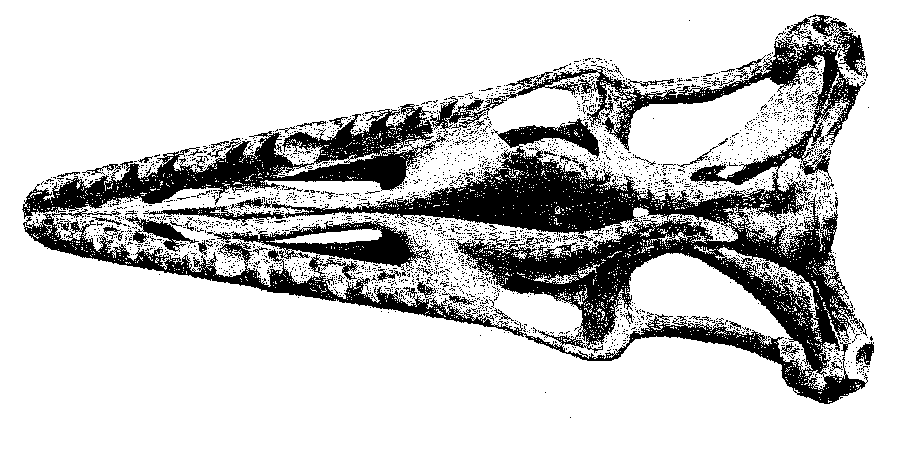
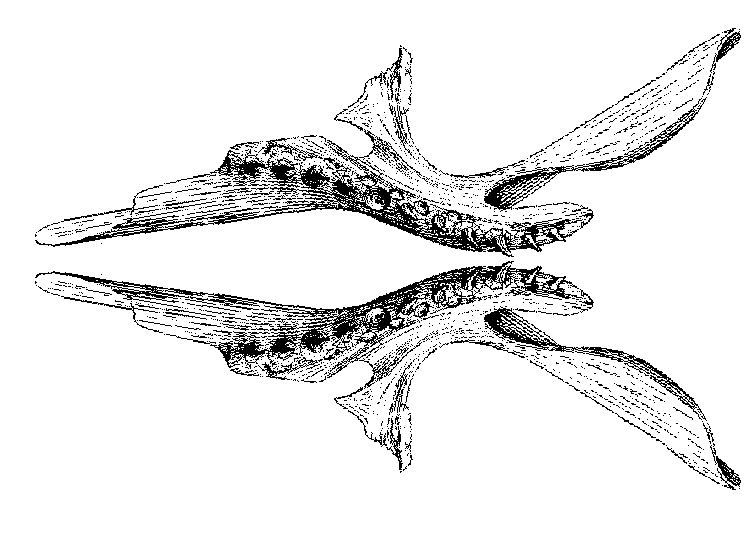
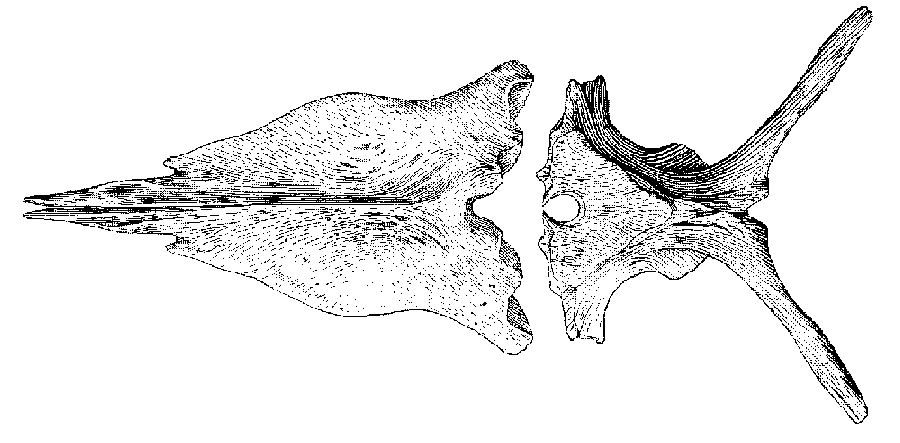
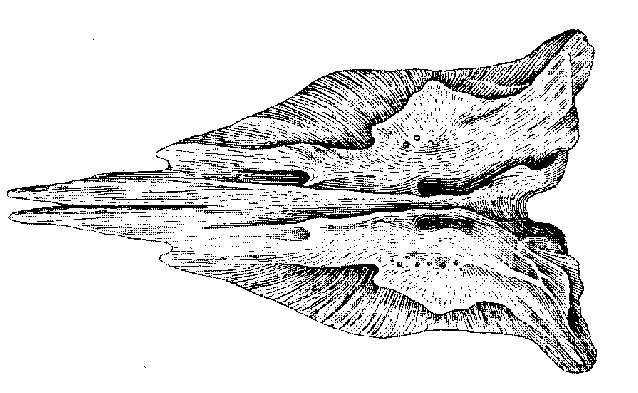
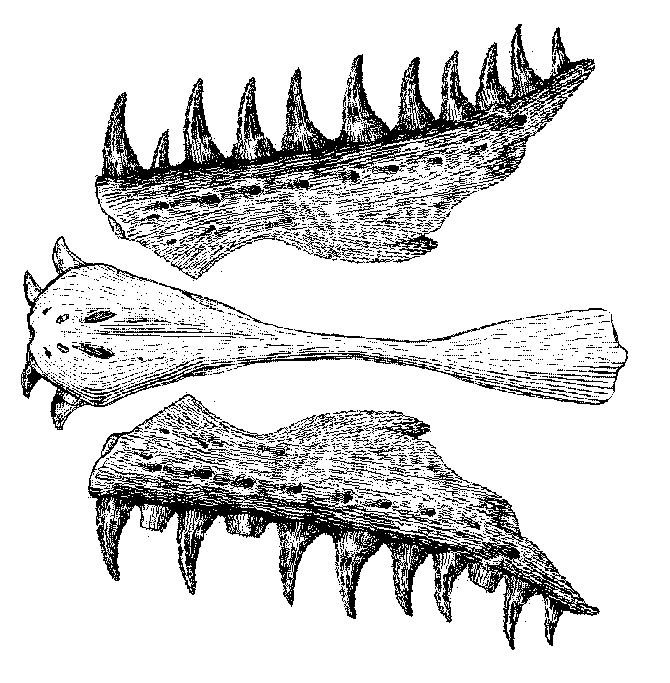
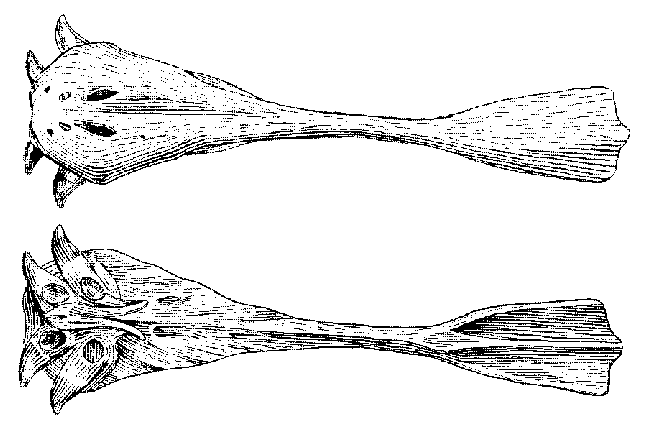
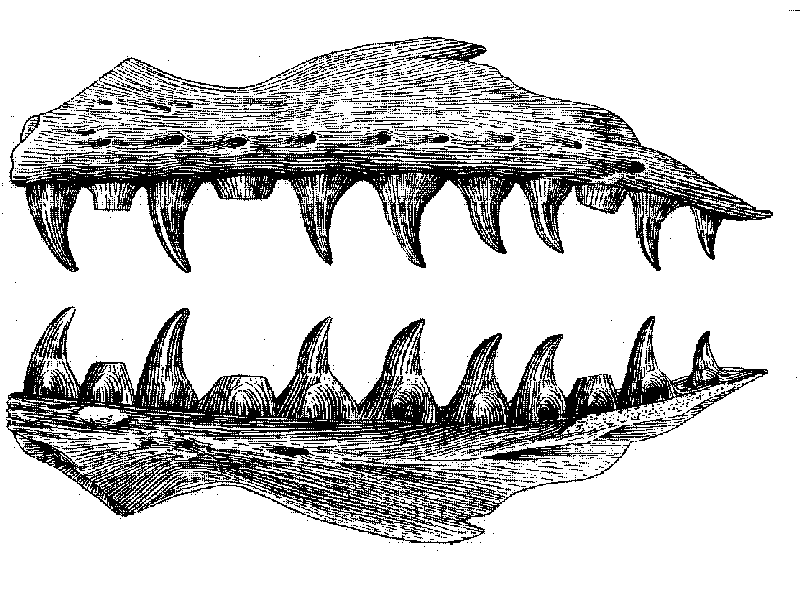
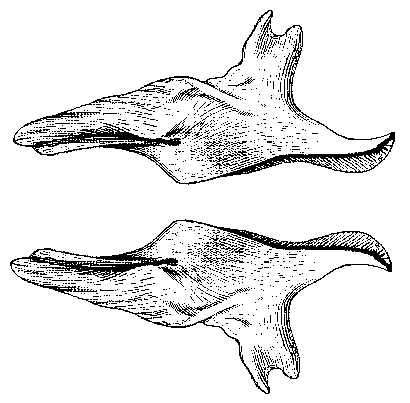
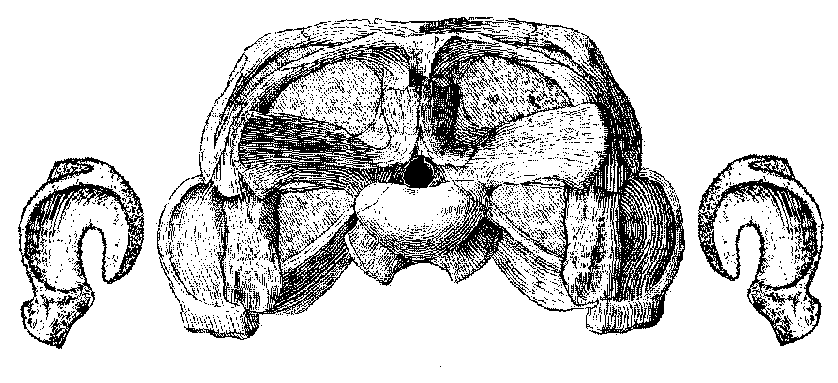
Other Williston line drawings...............
Credits: All figures on this and the indicated three following pages were taken from The University Geological Survey of Kansas, Vol. IV, Part I, Upper Cretaceous, published by the State Printer of Kansas, 1898.